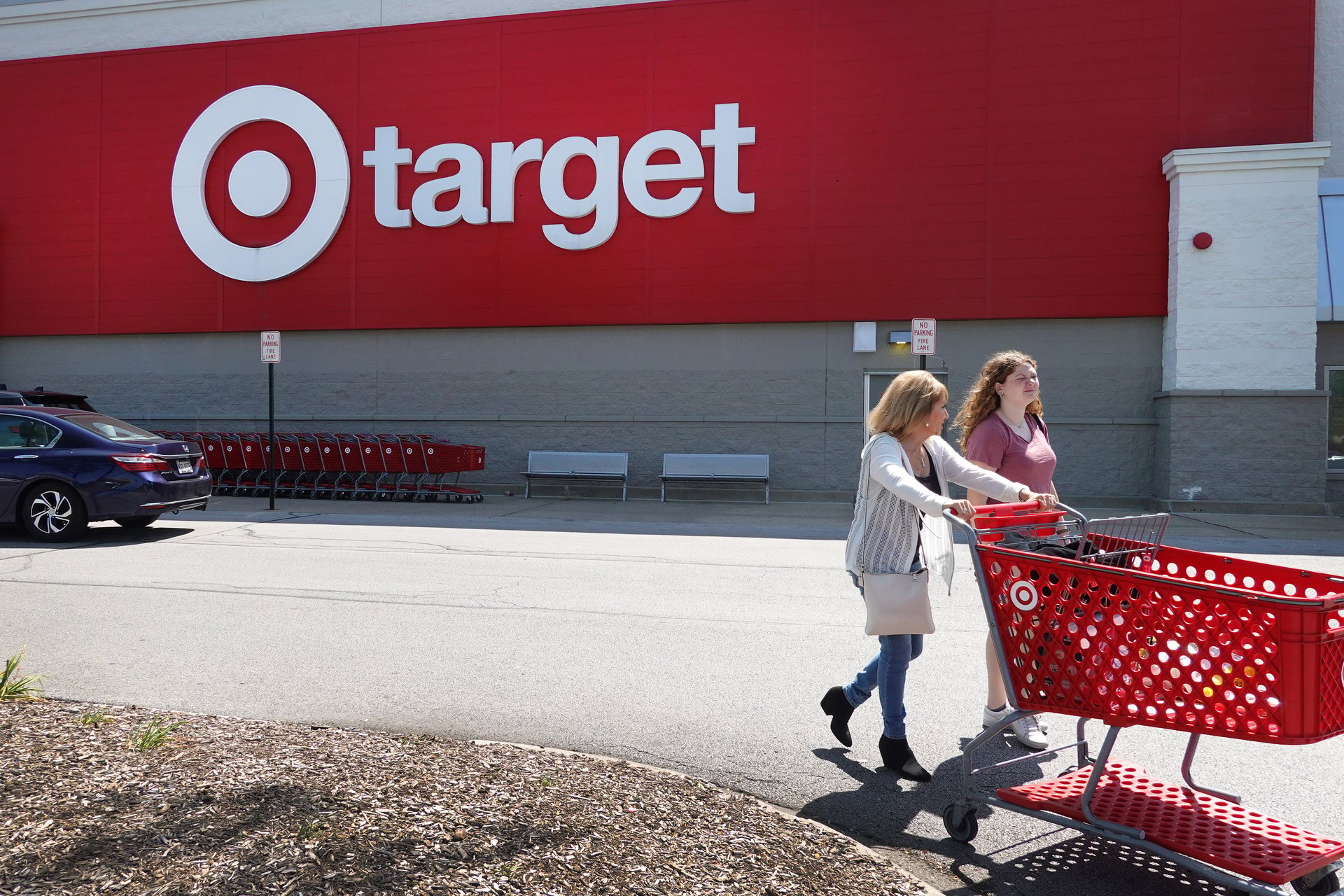Target just sent up a giant red flag about the U.S. consumer
A 30% stock plunge, collapsing store traffic, and margin pressure all point to the same thing: Affluent shoppers are rattled and recession fears are rising

High-income U.S. consumers are pulling back. Mortgage applications are down, Walmart (WMT) is reporting grocery gains from monied households suddenly keen for deals on eggs and bananas. And now Target joins a growing list of beloved brands waving the red flag that a recession may be coming.
Confidence crunch keeps shoppers away
In results released Wednesday, the company reported adjusted earnings per share of $1.30, falling 21% short of analyst expectations, and down from $2.03 a year ago on the same basis. Comparable sales fell 3.8%, with in-store traffic down 5.7%, offset only partially by a 4.7% rise in digital sales.
Operating margin compression also loomed large: Target’s underlying operating margin was 3.7%, down from 5.3% a year ago when excluding a one-time legal windfall. Margins were hit hard by higher markdowns, plus elevated supply chain and digital fulfillment costs.
Bright spots included a breakout Kate Spade (TPR) collaboration (the most successful designer collaboration of the last decade, management said) and a 36% surge in same-day delivery. But even those successes can’t obscure clear signs that Target’s customer base is fearing – or already feeling – real economic pain.
A bright red macro American signal
As usual, Target’s earnings reflect more than just company-specific issues — functioning as a window into the economic mood of its core American shopper.
Target is what’s called a “strongly cyclical” retailer, which means that it thrives when consumer confidence is high and shoppers feel secure enough to spend on things like candles, makeup, throw pillows, and massive Hot Wheels play sets. By extension, Target is often one of the biggest signals of weakening consumer confidence. In tougher times, its middle- and upper-middle-income customer base is often the first to trade down, delay purchases, or skip the trip altogether.
Right now, the latter phenomenon is coming to the fore.
Compared to Walmart results, the picture becomes even clearer. Walmart, for its part, tends to perform counter-cyclically, benefitting when consumers are wary and hard-pressed, tempted by its low-price dominance and more essentials-heavy mix. In its most recent results posted just last week, the retailer reported grocery gains among households earning over $100,000 — a classic sign of “trading down.”
As recession worries persist and student loan repayments bite, Target’s more discretionary-skewed basket is suffering. Additionally, a consumer boycott following Target’s cut to DEI programs is weighing on the retailer. GLAAD President and CEO Sarah Kate Ellis said of the results: “With the LGBTQ community wielding $1.4 trillion in spending power, and the fastest growing consumer segments being Black, Latine, and younger consumers, it’s no surprise that Target’s bottom line is down.”
Internal signs of strain at Target
Target appears to be responding to the challenging macro environment with a reorg, launching an internal “acceleration office” led by CFO Michael Fiddelke — a seeming signal that executives are under pressure to move faster and get costs under control. The office’s purpose is “enabling faster decisions and execution of its core strategic initiatives in support of a return to growth,” per the earnings release. Whether that means greater company use of AI tools wasn’t clear, but if so, it would fit a larger industry pattern.
The stress among executives is well understandable, too. Target stock is down almost 30% year to date, and down another 0.5% before Wednesday’s bell. While leadership insists the business is fundamentally strong, guidance for full-year sales is now a “low single-digit decline.” Investors, for their part, seem to be betting on more pain before a turnaround — add that to the list of recessionary signals, too.
